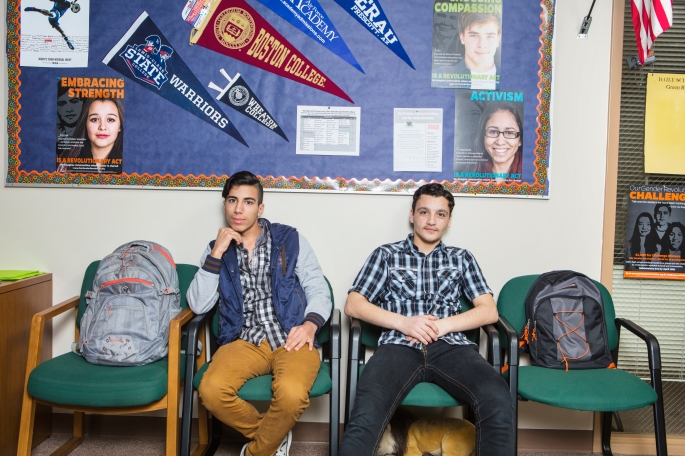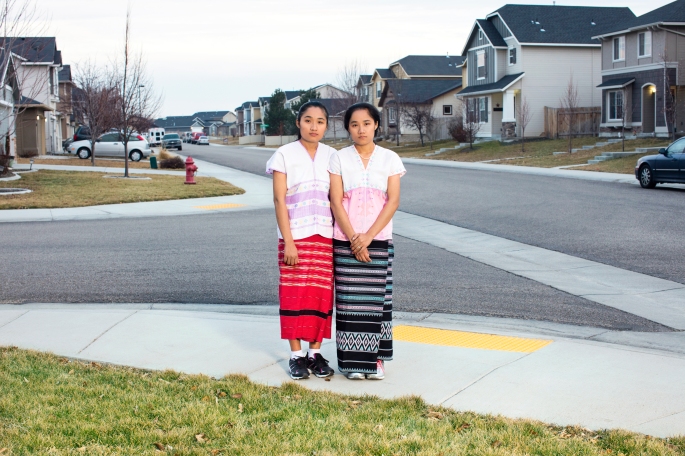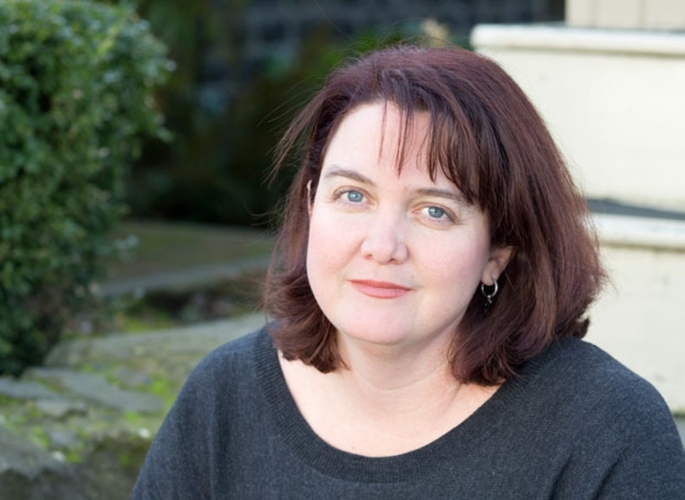By Stacy Basko
Need a break from what can feel like an endless supply of bad news? Here are 33 inspiring things happening in the food world, from refugee-run enterprises to restaurants that serve everyone, regardless of whether or not they can pay.
1. Anyone can enjoy South Indian specialties at Vimala’s Curryblossom Café whether they are able to pay or not. “Nobody turned away due to lack of money. Food is a human right,” reads the sign outside the restaurant in Chapel Hill, NC. “When Vimala cooks, everybody eats.”
2. The University of California at Irvine opened a food pantry that evolved into a wellness center. It’s now a model for colleges across the country that help food-insecure students stay in school.
3. Eat for Equity, Syria Supper Club, and Queer Soup Night throw dinner parties where like-minded folks come together to feast, fundraise, and maybe even dance a little. Each organization encourages generosity and creates community through the shared experience of a fabulous meal.
4. Houston café A 2nd Cup provides coffee, lunch, and a place to combat slavery and human trafficking. Funds from each sale help raise public awareness and provide housing, tutoring, job training and more for survivors as they restart their lives.
5. Intending to bridge small farmers of color who lack market outlets with urban communities that lack access to healthy, affordable, culturally appropriate food, Phat Beets Produce strives for a more equitable food system in gentrifying Oakland, CA.
6. In Wisconsin, adults with disabilities find training for future employment at Café Hope along with opportunities to reach their full potential in society.
7. In New York City, League of Kitchens matches immigrants who teach cooking classes in their homes with students eager to learn about food from around the world. Lessons bring people together to cook, eat and share stories, with family recipes and shopping tips provided at the end.
8. Star chef Jose Andres’ World Central Kitchen has served more than three million meals in Puerto Rico since Hurricane Maria. And Queer Kitchen Brigade continues to can farm-fresh vegetables and send jars to the island.
9. For the last 30 years, homeless women have been able to live with their children at a shelter in Sacramento, CA, and obtain life and job skills working at Plates Café and Catering. The program has provided nearly 30,000 women and children with tools to overcome poverty and lead healthier, more self-sufficient lives.
10. Good Food Markets, a nonprofit grocery store that works in, and for, food-desert communities in Washington D.C., is opening a second location. Partnering with local growers, producers, and distributors allows the stores to bring quality products and fresh food to neighborhoods that need it.
11. Across the country, Restaurant Opportunities Center United pushes to improve food service wages and working conditions so that everyone in the industry can achieve financial independence and improve their quality of life.
12. With training, scholarships, and enrichment programs, C-CAP helps underserved high school students complete culinary school in Philadelphia, New York, Los Angeles, and other US cities.
13. Meals at Café Momentum in Dallas, TX, are prepared and served by young men and women who earn wages and learn the trade as they complete a transformative 12-month internship following incarceration.
14. In the face of attempted travel bans, refugee-run enterprises like Global Grace Café, Refugee Coffee, and Eat Offbeat offer employment for recent arrivals and a unique eating experience for diners.
15. Lunch shaming, the practice of humiliating students or denying them food when they can’t pay for it, has been banned in Pennsylvania and California while lawmakers in the state of Washington are considering similar legislation.
16. Greyston Bakery’s “open hiring” policy enables cooks with no education or experience to learn how to bake the brownies that make Ben & Jerry’s ice cream so delicious.
17. Baked goods from Homeboy Foods give formerly gang-involved men and women a new way to belong in Los Angeles, CA. Cooks work with case managers to set goals and devise a plan to obtain job skills or a high school diploma, or form a course of action following parole or probation.
18. Haley House, an interdisciplinary program that rounds out its food justice offerings with affordable housing, has been established in Boston for more than half a century. The agency’s overarching goal is to help those made vulnerable by the harshest effects of inequality move toward wholeness and economic independence.
19. Art, activism, storytelling, food, and community come together at People’s Kitchen Collective in Oakland, CA. Through international dinners, workshops, performances, speeches, installations and more, the collective not only fills stomachs, but nourishes souls and feeds minds, ultimately fueling a movement.
20. Drive Change operates food trucks with a social justice mission in New York City. They impart transferable skills that broaden education and employment opportunities for young people coming home from adult jail and prison.
21. Komeeda’s Displaced Kitchen dinners allow recently resettled refugees a way to share their stories with fellow New Yorkers. Diners discover flavors they may never have known and socialize with chefs whose passion shines beyond their food
22. Kids create and sell salads at Minnesota Twins games with Roots for the Home Team. They attain culinary skills in the kitchen and sales skills working with the public. For many, it’s their first paying job outside of their own community.
23. Edwin’s Restaurant prepares formerly incarcerated adults for the world of fine dining in Cleveland, OH, while FareStart’s training programs help cooks affected by joblessness, poverty and hunger thrive in the Seattle food scene
24. Self-sufficiency is the main goal at Work Options for Women in Denver, CO. The organization helps low-income women break the cycle of poverty by instilling skills, confidence and support that lead to economic independence.
25. Harlem Grown’s urban farms inspire healthy living by increasing access to, and knowledge of, fresh locally grown food. They also run a summer camp for kids in New York City’s Harlem neighborhood.
26. ALBA’s ‘Farmworker to Farmer’ program enables agricultural workers in Salinas, CA, to grow and sell organic crops of their own. With broader skills, farmworkers are able to advance into management positions and maybe one day acquire a farm of their own.
27. Youth who have trouble finding regular employment run an artisanal chocolate shop called Confections with Convictions in Kalamazoo, MI. Opened by a counselor who worked with young people in the court system turned chocolatier, the shop emphasizes fair wages and local, organic, or fair trade ingredients.
28. DC Central Kitchen (Washington D.C.), Liberty’s Kitchen (New Orleans, LA), and Root (Salem, MA) are interdisciplinary agencies that uplift young people through education, employment, mentoring, meals, and more. At Liberty Kitchen, 16 to 24 year-old youth who are out of work or school attend a 16-week program where they attain life skills, culinary, and customer service training and professional development.
29. Across the country, food incubators like La Cocina, Hot Bread Kitchen, West Side Bazaar, and Comal Heritage Food Incubator help low-income food entrepreneurs realize their small business dreams.
30. A new online tool rates the risk for human rights abuses on fishing boats around the world, which helps businesses ethically manage seafood supply chains. “The Seafood Slavery Risk Tool” is run jointly by the Monterey Bay Aquarium Seafood Watch program, Liberty Asia, and the Sustainable Fisheries Partnership.
31. Philadelphia Assembled Kitchen, a group of 12 culinary artists, cooks, and storytellers, creates recipes and pop-up meals around themes of survival, resistance, and victory.
32. In Rhode Island and Massachusetts, people with a critical illness find support and nutritious, culturally-appropriate meals through Community Servings. The organization allows clients to maintain their health, dignity and family connections, while sending the message that someone cares.
33. At Jon Bon Jovi’s JBJ Soul Kitchen in Red Bank, NJ, an hour of kitchen work earns anyone a meal along with four family members. SAME Café in Denver, CO, has a similar policy.

Stacy Basko is a freelance writer and recipe developer with past lives in branding, marketing and non-profits. Her career has taken her into boardrooms, 4-star kitchens and state prisons. She writes in New Jersey, close enough, but not too far from New York City.
Cover photo courtesy of Work Options for Women in Denver, CO.
Copyright © 500 Pens. March 2017.


























You must be logged in to post a comment.